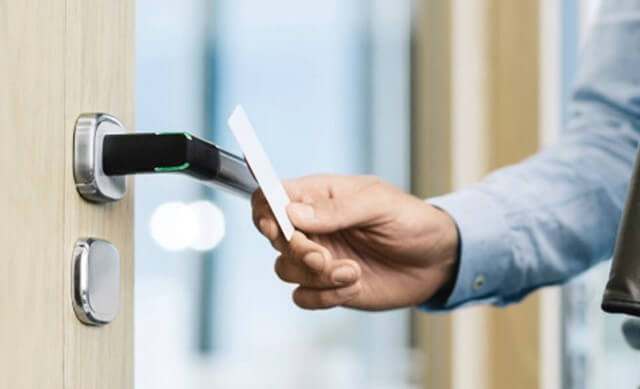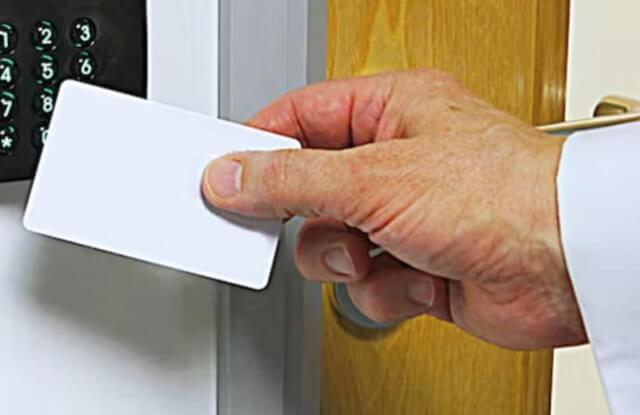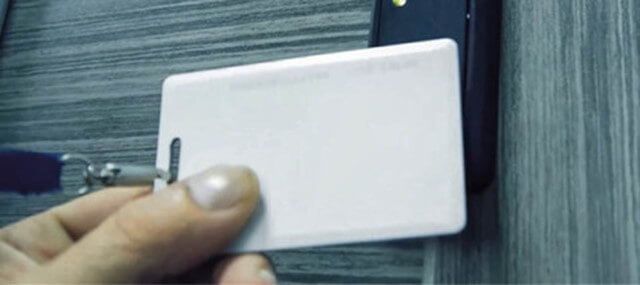How Does a Door Access Control System Work?

21 May 2024
Door access control systems are put in
place to restrict the people that can enter a room or building. You can take
control of who can access the facility and keep the door locked to those who shouldn’t
be there.
But how do they work and how do you make
sure that you choose the right solution for your business?
In this article, we answer some of the most
commonly asked questions when researching and selecting an access control
system.

What is a door entry system?
A door entry system is a form of access
control – a system that allows you to control who has access to a building, a
designated area of the building, or even an individual room. Door entry systems
play a significant role in controlling the safe entry and exit to and from your
facility.
A door entry system not only restricts
unauthorised access to controlled or high-risk areas of your operation, but it
also provides visibility of who is on-site.
Why use a door access control system?
Businesses install door access control
systems for a number of reasons:
- To increase the security of their facility
- To prevent loss
- For safety reasons
- To comply with industry-specific regulations
- To improve their own operational efficiency

Why do we need a door access control system?
The reasons you may need a system are
varied and change from business to business. All the reasons above of security,
safety, compliance and efficiency will be key drivers, but it is likely there
is a specific issue that you are looking to resolve.
Whatever your need, we can offer professional advice and a pre-design consultation
service to help you choose the right door access control system for
your business.
What are the different types of access control
doors?
There are almost as many different types of
access control doors as there are doors to control access to.
You can choose to increase your
premise security and use access control technology wherever and however you
need to. You can add access control to internal doors, external doors, as part
of an emergency exit route or even a security door.

What are the three 3 types of access control?
There are three different types of access
that you can grant with an access control system. They are:
Department
Access can be controlled based on the
department someone works in e.g. access can be granted to common areas and
those specific to that department.
Job role
This differs from department access (above)
as some job roles require access to be granted to wider areas e.g. IT /
Facilities / Cleaning. As part of these roles, your employees may need to cross
over into multiple departments and so would need wider access rights.
Discretionary or Customised
This is where access cannot simply be
applied according to the above criteria. A managing director, for example, may
have wider access across the business but still need to be restricted to
certain areas for health and safety reasons.
How does door access control work?
Once you have chosen the different levels
of access permissions, you need to consider how access will be granted. There
are three different ways door access works:
Credential
To access, the user presents a credential
which can either be physical, such as a key fob, or biometric (e.g. fingerprint
or face) and the credential is verified on an online system to grant
access.
Data on card
In this case, the card is the credential,
and the lock will ask the credential if you have permission to access
it.
Key Code
Alternatively, you can share a common code
with the relevant individuals, and this is entered on a mechanical keypad /
lock to gain access.

What is the difference between smart locks and access
control?
Smart locks are part of an access control
system, but they control the door entry only. However, a comprehensive
solution, such as TouchStar’s Access Control System, offers
end-to-end security that meets all of your needs.
Access Controlled Doors: how do people exit?
We talked about granting access to people,
but what about when they want to leave? The process for exiting can be as
varied as the entry systems, it might be a turnstile or gates that open
automatically based on a proximity reader.
Emergency Exits
For an emergency exit, what is required
depends on the type of space.
To exit from a public space the system must
comply with the standard BS 1125, which requires pressure to be applied to
grant exit. Common examples are a crash bar on a door or the need to break
glass.
For a workspace the standard to comply with
is BS 179, this requires training to be provided on how to exit, and the exit
should be a single mechanical operation e.g. a door handle.
Every effort should be made to ensure free
and uninterrupted exit in the case of any emergency.
How much does access control cost per door?
If you already have an access control
system in place and are looking to add more doors into it, then it can range
from £415 for a standard cylinder key fob access door to over £3,000 for a
top-of-the-range option.
If you don’t yet have an access control
system in place, then talk to us. We offer services including Consultancy and Site Surveys through to Installation.